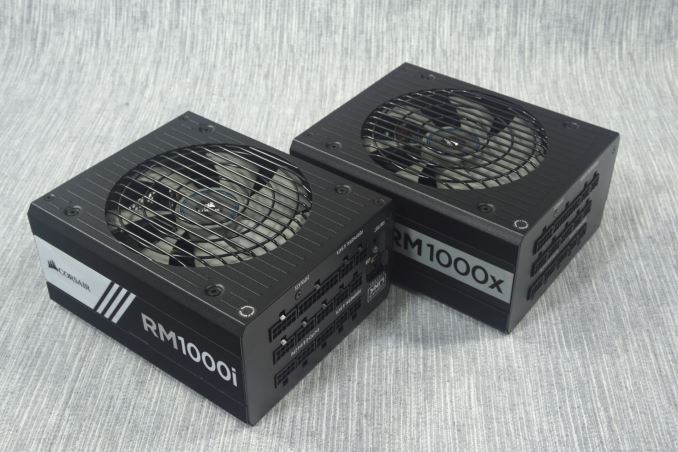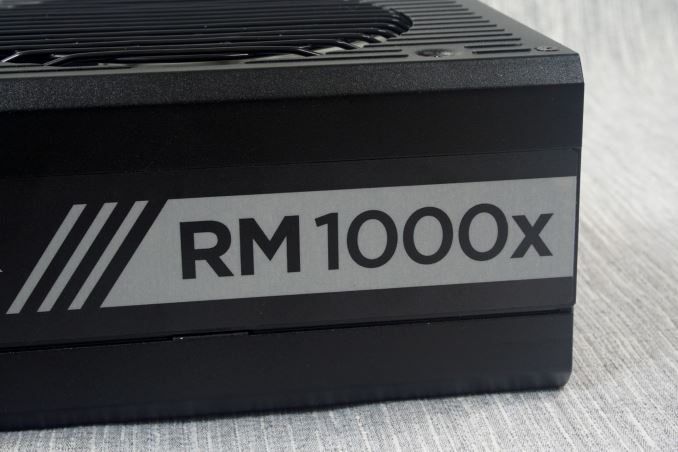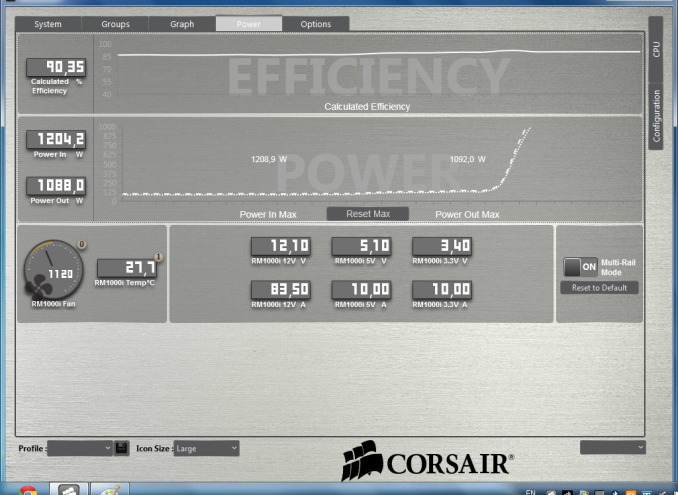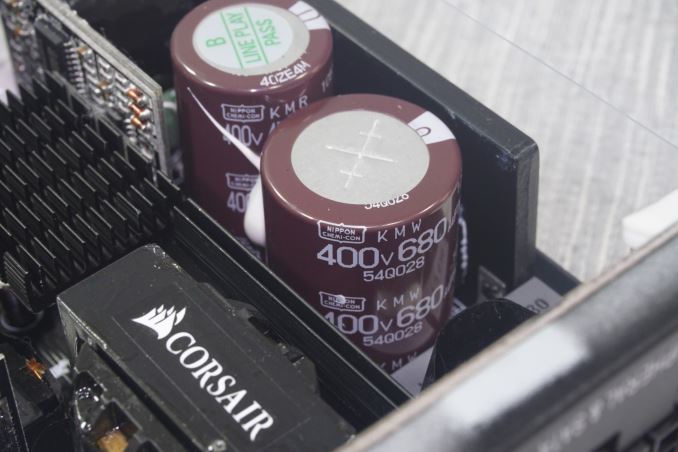The Corsair RM1000x and RM1000i 1000W Power Supply Review
by E. Fylladitakis on September 30, 2015 8:00 AM EST- Posted in
- Cases/Cooling/PSUs
- Corsair
- RM Series
- Corsair Link
Conclusion
With Corsair placing a lot of emphasis within their business operations on their PSUs, it is no surprise that they are constantly releasing new models and upgrading their old ones. The RM series is focused on providing high performance while maintaining the lowest possible noise levels. In our review of the original RM1000, the PSU did manage to maintain outstandingly low noise levels, but there were certain shortcomings. The electrical performance was not on par with other advanced units and the small heatsinks resulted to relatively high temperatures, even under low loads. Furthermore, the use of components from not highly reputable manufacturers was criticized.
One year later, Corsair fixed all of these shortcomings, greatly improving the performance and the quality of the new RM-i and RM-x series units. All of the capacitors are now supplied by one Japanese manufacturer, Nippon Chemi-Con. They significantly increased the heatsink mass, resulting to lower operating temperatures, especially while the fan is not spinning. The lower operating temperatures allow the PSU to perform more efficiently and output more power, which is why Corsair increased the specification temperature to 50°C from 40°C. Furthermore, the electrical performance is impressively better, reducing voltage ripple and improving regulation by more than 50%. Finally, with the latest update Corsair also increased the warranty period from five to seven years.
As for the differences between the RM1000i and RM1000x, there is just one: the Corsair Link interface. Other than that, the two units are indistinguishable from each other and their performance is identical as well. The RM1000i currently retails for $189 including shipping and the RM1000x, according to their MSRP pricing, should be retailing for $20 less.
Is the Corsair Link interface worth the extra $20? Well, it depends on the user, their needs, and to some extent whether they have multiple Corsair Link compatible devices installed to help spread the cost over multiple components. The Corsair Link software is fairly versatile and can be used to monitor vital figures such as temperatures, fan speeds, and in the case of power supply units, voltages and currents. For example, as can be seen in the figure below, the power input/output of the PSU and the individual voltage/current readings of each rail can be monitored in real time and logged as well. By default, the Corsair Link will not interfere with the standard protection circuitry of the PSU, even if the PSU is overloaded, as in the following example. The OPP (over power protection) will shut down the PSU instantly if the load is too high in relation with the temperature of the PSU.
The Corsair Link feature also allows for the programming of thermal and safety profiles, allowing the user to create custom cooling profiles and initiate commands or warnings when certain thresholds have been exceeded. For example, certain fans can be set to turn off while the system is idling and start after a temperature exceeds a certain threshold. The Corsair Link does end up being very useful. but the truth is that the PSU will still work just fine without it. Therefore, it is up to the user to decide whether this extra flexibility and options are worth the extra $20 for them.
Ultimately there is no argument over whether the upgraded RM series models are significantly better than those presented one and a half year ago. The new models are of significantly greater quality, come with a longer warranty, and their power quality is significantly better, all the while their retail price is about the same as that of the first model. For those buyers who want a truly high performance PSU designed with low-noise operation in mind, the new RM1000 units are some of the best choices currently available.














47 Comments
View All Comments
HOOfan 1 - Thursday, October 1, 2015 - link
There is about a 2% difference in efficiency between these 1000W PSUs, and a 650W 80 plus Platinum PSU at 100W of DC usage. So, we are talking about using an extra 2 Watts...big whoop.lozikosaz - Thursday, October 1, 2015 - link
1- Those numbers are made up by you.2- You are ignoring different vendors and models.
3- A modern, powerful rig may consume like 50W when browsing or doing office work.
4- There is nothing wrong in saving 1% of power by using a more appropriate PSU, and surely a cheaper one.
HOOfan 1 - Thursday, October 1, 2015 - link
1- No they are made by actually reading reviews and looking at the numbers.Go find Kitguru's review of the RM1000x. They get 87.32% efficiency from the RM1000x at 100W. Go look at the Jonnyguru.com review of the EVGA P2 650 he gets 87.6% efficiency at 65W and 90.7% at 142W. So you are looking at around 88%-89% efficiency at 100W. Guess what, that is a 2%-3% difference.
You haven't provided ANYTHING
2- This article was about the RM000i/RM000x...so why should I talk about different vendors?
3- At 50W, a 5% difference in efficiencies is 2.5W....so the lower the power draw, even with a difference in efficiency, you are still wasting less power than you would be at higher loads.
4- There is also nothing wrong with using an over rated PSU which can provide a lot more power before the fan kicks on.
5- These sites publish what brings in readers. Reviewer after reviewer has said that the high power PSU reviews bring in more viewers.
HOOfan 1 - Thursday, October 1, 2015 - link
Or you could do a more apples to apples comparison from the Kitguru, since they use the same testing equipment and AC sourceCorsair RM1000x 87.3% efficient at 100W DC draw
Be Quiet Dark Power Pro 11 89.5% efficient at 110W DC draw
Coolermaster V 550 88.6% efficient at 110W DC draw
So the 80 plus platinum 550W unit is only 2.2% more efficient than the 1000W 80 plus gold and the 80 plus gold 550W unit is only 1.3% more efficient than the 1000W 80 plus gold
lozikosaz - Wednesday, September 30, 2015 - link
@ArbieIn case you didn't read, I mean :"I wish that Anandtech made more reviews for PSU in the range of 500/750W", which overkills any powerful single GPU rig.
Arbie - Friday, October 2, 2015 - link
@lozikosaz - I was being facetious... I agree with you.paul878 - Sunday, October 4, 2015 - link
Too many models Corsair, your product line is getting confusing.